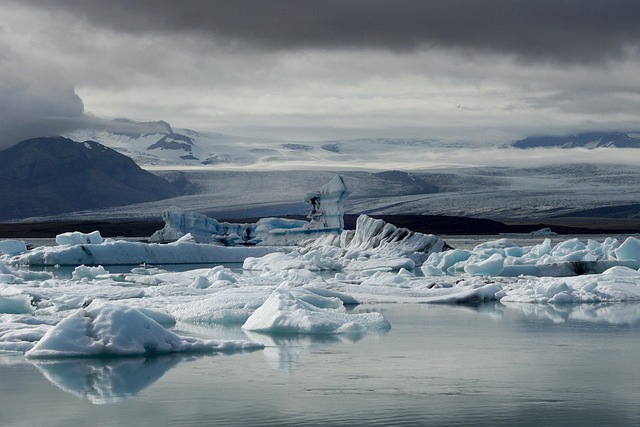Cold water immersion boosts calorie burn through increased metabolic rate and blood vessel constriction, contributing to weight loss as part of a balanced fitness routine. While popular for fat burning, its effectiveness varies, and prolonged exposure carries health risks. Starting slowly and hydrating properly, cold plunges offer primary benefits in enhanced recovery, reduced inflammation, and mental focus.
“Uncover the power and potential pitfalls of cold plunges in your weight loss journey. This comprehensive guide explores the science behind ‘calorie burn with cold water immersion’—a popular strategy among fitness enthusiasts. We delve into its benefits, from boosting metabolism to aiding fat loss, and discuss the limits and risks associated with extreme cold therapy. Learn how to safely incorporate cold water immersions into your fitness routine for optimal results.”
What is Calorie Burn with Cold Water Immersion?
Cold water immersion, or plunging into cold water, is a practice that has gained attention for its potential health benefits, including weight loss. When you immerse yourself in cold water, your body responds by increasing its metabolic rate to generate heat and maintain core temperature. This process leads to enhanced calorie burn, as the body works to adapt to the sudden temperature change.
During a cold plunge, blood vessels constrict to preserve core warmth, which requires energy. Simultaneously, your body may also experience increased norepinephrine levels, often referred to as the ‘fight or flight’ hormone, leading to further elevated metabolic rates. This double-pronged approach can significantly contribute to calorie burn and is a key factor in understanding the potential for cold water immersion to support weight loss goals as part of a balanced fitness routine.
Benefits of Cold Plunges for Weight Loss
Cold plunges, or immersing yourself in cold water, have gained popularity as a weight loss strategy due to their potential benefits for fat burning and metabolism. When your body is exposed to cold water, it undergoes a stress response that triggers various physiological changes. One of the key effects is an increase in calorie burn. The cold temperature elevates your metabolic rate, encouraging your body to use stored energy, including fat, as fuel. This process, known as thermogenesis, can lead to enhanced weight loss when combined with a balanced diet and regular exercise.
Additionally, cold water immersion may improve insulin sensitivity, which is crucial for weight management. Insulin plays a significant role in regulating blood sugar levels and storing excess energy as fat. By enhancing insulin sensitivity, cold plunges could help prevent the conversion of carbohydrates into stored fat, making it an effective tool for those looking to slim down and maintain a healthier body composition.
Limits and Potential Risks of Extreme Cold Therapy
While cold plunges, like immersing oneself in cold water, have gained popularity as a weight loss method due to their claimed ability to enhance calorie burn with cold water immersion, it’s crucial to acknowledge certain limits and potential risks. Extreme cold therapy can induce a temporary increase in metabolism, but the effect is generally modest and varies greatly among individuals. Prolonged or excessive exposure to extreme cold can lead to severe health complications, especially for those with pre-existing conditions like heart disease, low blood pressure, or Raynaud’s disease. Shivering, a common physiological response to cold, while slightly efficient at burning calories, may not be sustainable or effective enough to significantly contribute to weight loss. Additionally, there’s limited scientific evidence supporting the long-term efficacy and safety of regular cold plunges for significant fat loss.
Incorporating Cold Water Immersion into Your Fitness Routine Safely
Incorporating cold water immersion, like cold plunges or ice baths, into your fitness routine can offer a unique and effective way to enhance recovery and potentially boost weight loss efforts. However, it’s crucial to approach this practice with caution. Start by gradually exposing yourself to cooler temperatures to avoid any shock to your system. Begin with shorter durations—around 10-15 minutes—and slowly increase the time as you build tolerance. Always ensure proper hydration before and after cold water immersion to maintain optimal body temperature regulation.
The calorie burn associated with cold water immersion is a result of both acute thermogenic response and increased metabolic rate post-immersion. Cold exposure triggers a temporary rise in energy expenditure, with studies suggesting a boost of up to 200 calories burned per session. This effect can be particularly beneficial for those aiming to manage or lose weight, as it adds to their daily calorie deficit. Yet, it’s important to remember that the primary benefits lie in improved recovery, reduced inflammation, and enhanced mental focus, all of which contribute to a holistic approach to fitness and wellness.
Cold water immersion, or cold plunges, can be a powerful tool for weight loss by increasing calorie burn and promoting fat loss. However, it’s essential to understand both the benefits and limits of this extreme cold therapy. While it may offer advantages like reduced inflammation and improved recovery, it’s not without risks. To incorporate cold water immersion safely into your fitness routine, start slowly, listen to your body, and consult a healthcare professional if you have any concerns. Remember, balance is key, and combining cold plunges with a balanced diet and consistent exercise will yield the best results for sustainable weight loss.
